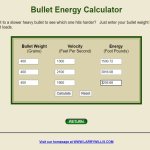There is a significant difference in actual recoil and perceived recoil. A hard surface with minimal surface area such as the OP's single shot with it's skinny crescent steel butt plate will transfer greater force per square inch than say the same rifle with a big cushy pad that spreads the force over a greater surface area. A thick resilient pad will also spread the force out over a longer time period which also lessens perceived recoil.
Stock design also plays into perceived recoil as a poor fitting stock can cause the rifle to rise up and "slap" a shooter in the face , or as I suspect in the OP's case, cause the rifle muzzle to move laterally and slip out of the shoulder pocket and onto the bicep.
The 45-70 should be thought of as 3 separate cartridges depending on the rifle they are fired out of. Most factory loads are very mild as they could potentially used in very old rifles that can't take the pressures of modern cartridges. At the top end are the Ruger #1, Winchester/Browning 1885 , and various Mauser builds. The difference in energy developed using a 400 grain bullet at ~1300 fps and 2100 fps is astounding The 400 grain bullet @ 1300 fps produces ~1500 foot pounds of energy. The same 400 grain bullet @2100 fps produces ~3900 foot pounds.

Stock design also plays into perceived recoil as a poor fitting stock can cause the rifle to rise up and "slap" a shooter in the face , or as I suspect in the OP's case, cause the rifle muzzle to move laterally and slip out of the shoulder pocket and onto the bicep.
The 45-70 should be thought of as 3 separate cartridges depending on the rifle they are fired out of. Most factory loads are very mild as they could potentially used in very old rifles that can't take the pressures of modern cartridges. At the top end are the Ruger #1, Winchester/Browning 1885 , and various Mauser builds. The difference in energy developed using a 400 grain bullet at ~1300 fps and 2100 fps is astounding The 400 grain bullet @ 1300 fps produces ~1500 foot pounds of energy. The same 400 grain bullet @2100 fps produces ~3900 foot pounds.








































































